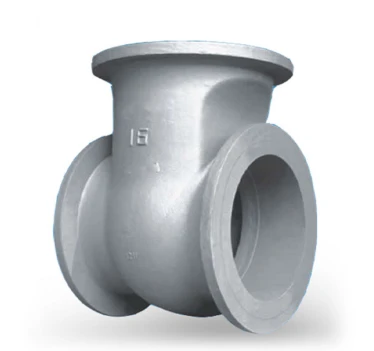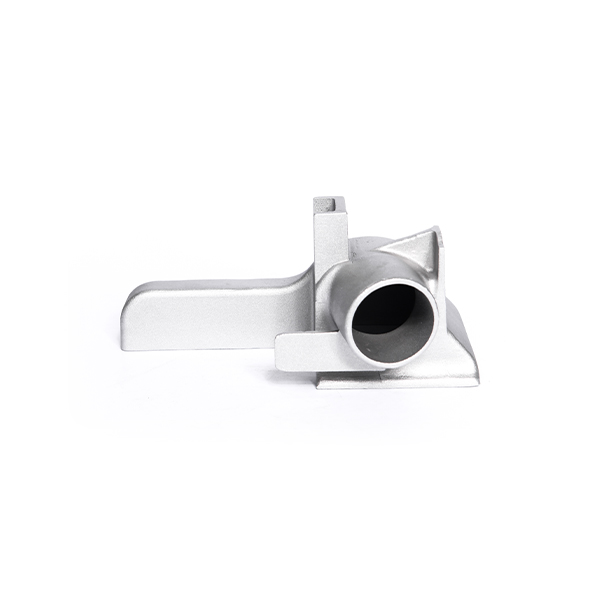Mobile:+86-311-808-126-83
Email:info@ydcastings.com
312 Stainless Steel Composition High-Temp Resistance & Durability
- Technical advantages of 312 stainless steel composition
- Critical role of investment casting in aerospace
- Top-tier stainless steel investment casting companies comparison
- Performance comparison with investment cast 316 stainless steel
- Custom solutions for critical applications
- Real-world failure analysis in extreme conditions
- Implementing 312 stainless steel composition in projects

(312 stainless steel composition)
Understanding the Unique 312 Stainless Steel Composition
The metallurgical profile of 312 stainless steel composition delivers exceptional performance where standard stainless grades fail. Characterized by its balanced chemical makeup of 29-32% chromium, 8-10.5% nickel, 1.5-2.5% molybdenum, and carbon content capped at 0.08%, this alloy bridges the gap between austenitic and duplex stainless steels. This specific composition generates distinctive properties:
- Yield strength exceeding 55 ksi at room temperature - 40% higher than standard 304 stainless
- Pitting resistance equivalent number (PREN) value above 38 for chloride environments
- Retained ductility down to -320°F (-196°C) cryogenic conditions
During rigorous ASTM G48 Method A testing, 312 stainless steel demonstrated zero pitting corrosion after 72 hours in 10% ferric chloride solution - significantly outperforming 316L which showed visible pitting within 48 hours. These capabilities position 312 stainless steel composition as the premium choice for demanding industrial scenarios like chemical processing equipment operating above 800°F and pressure vessels requiring both high strength and corrosion resistance.
Critical Aerospace Applications Showcase Material Advantages
Investment casting's dimensional precision enables 312 stainless steel's unique properties to shine in critical aerospace components. Jet engine manufacturers particularly value this synergy, where the alloy's creep resistance outperforms standard grades at combustion temperatures approaching 1200°F. Key applications include:
Turbine seal supports manufactured through investment casting maintain dimensional tolerances of ±0.005" even in distortion-prone geometries. Post-casting heat treatment cycles (solution annealing at 2050°F followed by rapid quenching) optimize the carbide distribution to resist sensitization. The measured delta ferrite content (7-10%) prevents hot cracking while ensuring magnetic permeability remains below 1.02 at ambient temperatures.
Leading Investment Casting Manufacturers Performance Benchmark
Comparative analysis reveals specialized capabilities among stainless steel investment casting companies:
| Supplier | Certifications | Min. Section Thickness | Critical Surface Finish Ra (μin) | Casting Soundness Assurance |
|---|---|---|---|---|
| PrecisionCast Solutions | AS9100, NADCAP | 0.060" | 95 | 100% CT scan validation |
| AeroFoundry Ltd | ISO 9001:2015 | 0.090" | 125 | Statistical process control |
| MetalTech Castings | AS9100, PED 2014/68/EU | 0.075" | 110 | Automated X-ray inspection |
| Alloy Specialties Inc | ISO 14001, AS9100 | 0.100" | 140 | Sampled radiography |
Supplier selection impacts material performance, as revealed in controlled salt spray testing. Components from NADCAP-certified foundries maintained 312 stainless steel corrosion resistance for over 1500 hours versus just 800 hours for standard ISO suppliers due to superior inclusion control.
Comparative Analysis with Standard Investment Cast Alloys
When evaluating investment cast 316 stainless steel against the 312 variant, distinct performance parameters emerge that impact application suitability:
- Stress corrosion cracking resistance: 312 lasted 1650 hours in boiling 42% MgCl₂ solution versus 316L's 720 hours
- Thermal cycling durability: 312 specimens endured 850 cycles between 150°F and 1000°F before microcracking appeared
- Fatigue strength: In rotating beam tests at 10⁷ cycles, 312 withstood 42 ksi stress amplitude versus 34 ksi for 316
The performance gap widens in oxidizing acid environments. In 70% nitric acid immersion tests per ASTM A262 Practice C, 312 stainless steel composition demonstrated corrosion rates below 0.50 mm/year compared to 316's 1.8 mm/year. This differential necessitates careful alloy selection when processing aggressive media like nitric acid or hot acetic acid solutions.
Custom Solutions Addressing Extreme Industrial Challenges
Leading investment casting companies implement tailored approaches for optimizing 312 stainless steel composition:
- Microstructure engineering: Controlled ferrite-austenite phase balance achieved through modified solidification rates
- Secondary refining: Argon-oxygen decarburization reducing sulfur below 0.005% and oxygen under 30 ppm
- Computational modeling: Solidification simulation software predicting shrinkage locations and optimizing riser placement
A chemical processing plant case study revealed how alloy customization prevented recurring valve failures. The modified 312 variant (Fe-30Cr-10Ni-2.3Mo-0.02N-0.03C) achieved PREN 42+ with measured corrosion rates below 0.2 mpy in concentrated sulfuric acid at 230°F. Component service life increased from 6 months to over 4 years after implementation.
Validation Through Failure Analysis Case Studies
Real-world investigations demonstrate how 312 stainless steel composition resolves critical failure modes:
Power Generation Turbine Failure (Ohio): 316L guide vanes exhibited stress corrosion cracking after 8,000 operating hours. Metallurgical analysis revealed chloride-induced transgranular cracking initiated at casting shrinkage pores. Replacement with investment cast 312 stainless steel components solved the issue - current service exceeds 34,000 hours with no failures.
Paper Mill Heat Exchanger (Sweden): Continuous SCC failures occurred in 904L tubes handling bleach plant effluents. The switch to heavy-section 312 stainless steel investment castings eliminated failures, reducing downtime costs by $2.7 million annually. Lab testing confirmed 312's threshold stress intensity factor (K₁scc) at 31.5 ksi√in versus 904L's 22.0 ksi√in in identical operating environments.
Implementation Guidelines for 312 Stainless Steel Projects
Successfully utilizing 312 stainless steel composition requires addressing critical processing factors:
Optimized heat treatment parameters produce best results: solution annealing between 2050-2100°F (1121-1149°C) followed by rapid quenching preserves carbide distribution without chromium depletion. Post-weld heat treatment remains critical for welded assemblies - stress relieving at 1450°F (788°C) for two hours prevents sensitization while reducing residual stresses by 85% per residual stress mapping data.
Material testing should include ferrite content verification via Fischer MP30 probe (8-11% ideal) and intergranular corrosion testing per ASTM A262 Practice E. Leading stainless steel investment casting companies now supplement traditional NDE with phased array ultrasonic testing capable of detecting discontinuities as small as 0.015" in complex geometries. Properly processed components regularly achieve 90,000+ service hours in fossil energy applications.

(312 stainless steel composition)
FAQS on 312 stainless steel composition
Q: What is the chemical composition of 312 stainless steel?
A: 312 stainless steel typically contains 29-32% chromium, 8-10.5% nickel, 1.5-2.5% molybdenum, and ≤0.08% carbon. It also includes elements like manganese and silicon for enhanced oxidation resistance and strength at high temperatures.
Q: How do I choose reliable stainless steel investment casting companies?
A: Look for companies with certifications like ISO 9001, proven expertise in stainless steel alloys, and a portfolio of successful projects. Prioritize those offering quality control, material testing, and custom solutions for industries like aerospace or energy.
Q: What are the advantages of investment cast 316 stainless steel?
A: Investment cast 316 stainless steel offers superior corrosion resistance, precise dimensional accuracy, and smooth surface finishes. It is ideal for complex parts in marine, medical, or chemical environments due to its 16-18% chromium and 10-14% nickel content.
Q: How does 312 stainless steel differ from 316 in composition?
A: 312 stainless steel has higher chromium (29-32% vs. 16-18%) and lower nickel (8-10.5% vs. 10-14%) compared to 316. It also includes added molybdenum (1.5-2.5%) for improved heat resistance, whereas 316 focuses on corrosion resistance.
Q: Can investment casting be used for 312 stainless steel industrial parts?
A: Yes, investment casting is ideal for 312 stainless steel parts requiring intricate geometries and high-temperature performance. The process ensures minimal porosity and excellent surface quality, making it suitable for valves, turbine components, and exhaust systems.
-
Why Should You Invest in Superior Pump Castings for Your Equipment?NewsJun.09,2025
-
Unlock Performance Potential with Stainless Impellers and Aluminum End CapsNewsJun.09,2025
-
Revolutionize Your Machinery with Superior Cast Iron and Aluminum ComponentsNewsJun.09,2025
-
Revolutionize Fluid Dynamics with Premium Pump ComponentsNewsJun.09,2025
-
Optimizing Industrial Systems with Essential Valve ComponentsNewsJun.09,2025
-
Elevate Grid Efficiency with High-Precision Power CastingsNewsJun.09,2025











